BAE Systems have unveiled what it calls a “first of its kind factory” to advance manufacturing on the UK’s next generation combat air system, Tempest.
The new facility at BAE Systems’ site in Warton, Lancashire, is the result of a multi-million pound investment and collaboration with more than 40 blue chip and SME companies along with academic institutions.
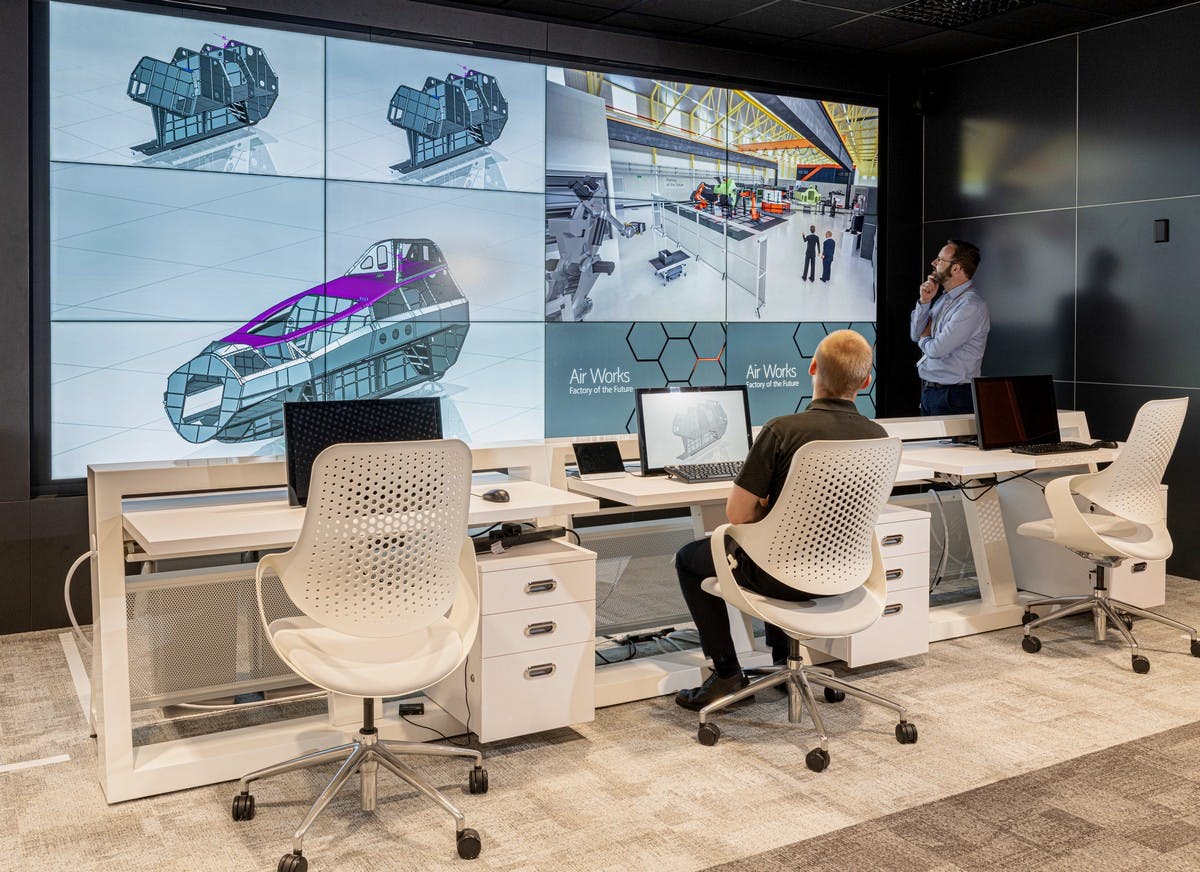
According to the firm in a news release:
“Harnessing the best of UK innovation, the Company has developed a digitally connected, intelligent factory for future military aircraft production. Bringing together advanced manufacturing technologies, the factory will transform engineering processes. Automated robots, as well as virtual and augmented reality will increase speed, precision and efficiencies, as well as reduce the costs associated with the manufacture of complex military aircraft structures.
The factory also demonstrates a new approach to the way humans and machines can operate together. Cobotics and other flexible robot technologies remove the need for heavy, fixed, long-lead tooling and can quickly switch from the manufacture of one item or platform to another. Intelligent machines and off-the-shelf robotic technology from the automotive industry have been modified to operate at the precise tolerances required for military aircraft, which in some cases are less than a third the width of a human hair. Such technology drives greater productivity by allowing operators to focus on more highly-skilled and strategic tasks and production managers to oversee operations from a fully digitised, virtual office.
The new facility underpins efforts of the UK-led Tempest programme to meet the UK’s ambition to remain at the forefront of the Combat Air sector by delivering more cost-effectively and in half the time of previous programmes.”
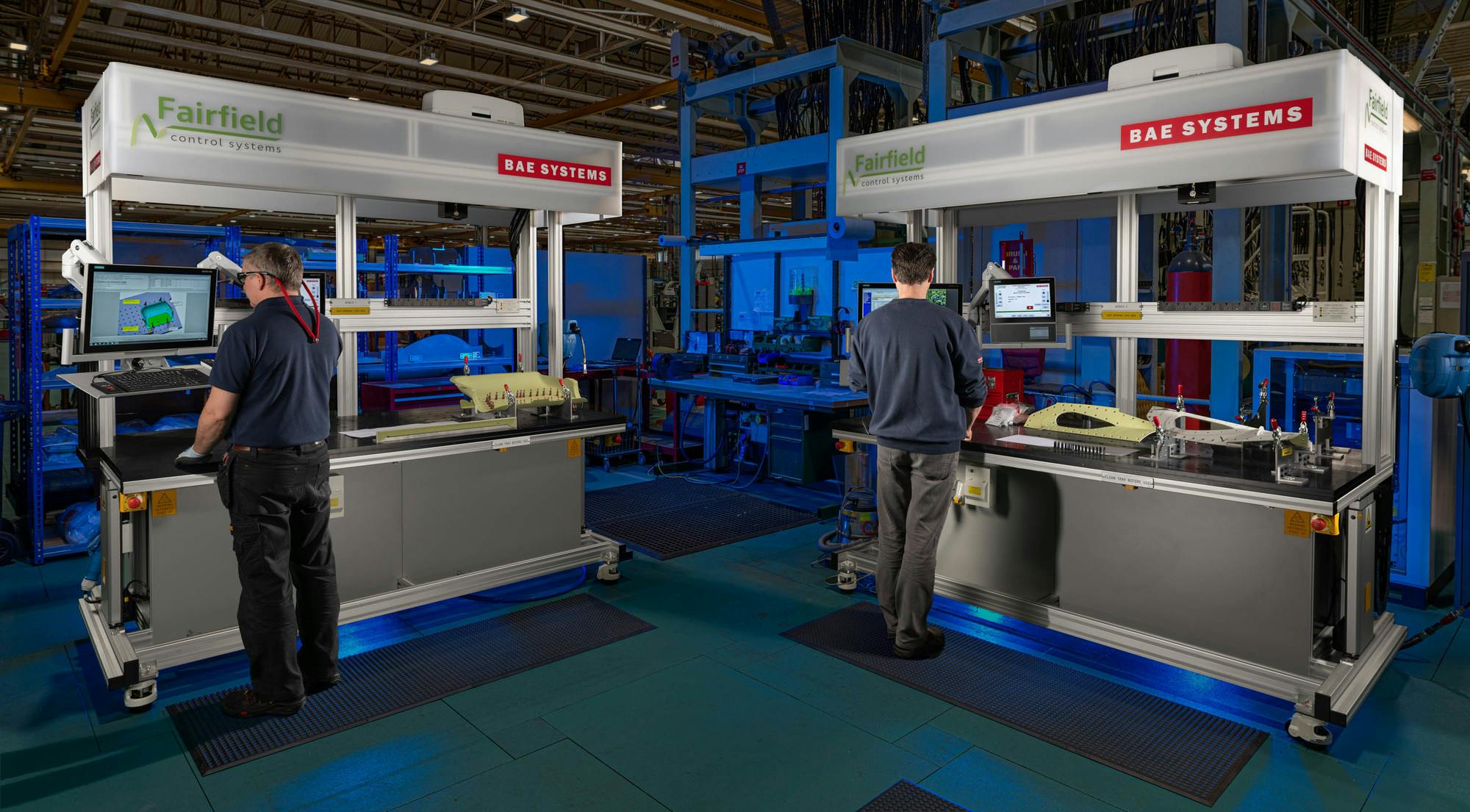
Dave Holmes, Manufacturing Director for BAE Systems Air, said:
“We’ve collaborated with the best of UK industry and academia to develop a cutting-edge facility that combines current and emerging technologies, ensuring the UK remains at the forefront of combat air technology development. Driving our manufacturing capabilities forward as we prepare for the fourth Industrial Revolution, will sustain and develop critical skillsets and ensure we can continue to deliver military capability to address future threats, whilst improving productivity and delivering value for money for our customers.”
BAE add that technologies inside the factory are already delivering benefits. The intelligent workstation, developed in collaboration with The University of Sheffield’s Advanced Manufacturing Research Centre (AMRC) and Fairfield Control Systems, is in use on the Typhoon production line.
“It uses a system which recognises operators and automatically delivers tailored instructions using ‘pick by light’ technologies. In addition, additive manufacturing technologies are being used in the production of Typhoon aircraft parts and assemblies.”



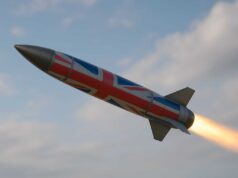
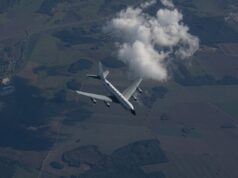


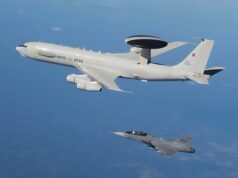
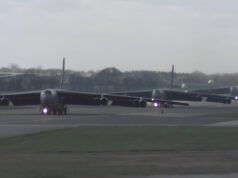

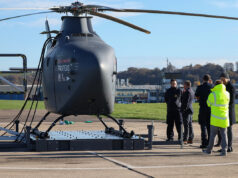
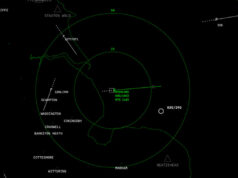
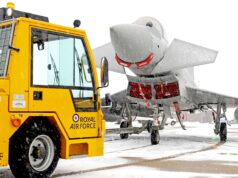

This process should drive down cost considerably. The more efficient the build period the more likely this plane can achieve a realistic unit price? Obviously, BAE intends to proceed (for now) with Tempest, which is very encouraging, and if the true unit cost can be attained, the greater the chances of the RAF receiving this plane in the next decade or so?
Agreed. Exciting stuff. I sincerely hope enough thought has been put in to prevent any state sponsored industrial espionage units from infiltrating this facility.
I doubt we will ever know about infiltration, however, an interesting thought, how many ‘F’s’ have the West managed to infiltrate into Russian military equipment? I doubt it’s zero!
Robotics are just getting started and in combination with 3D printing could change the way governments build military hardware. Imagine ordering a Tempest by lifting the phone and someone pressing a button. One week later a completely serviceable fighter is delivered. Such a modus operandi could reduce aircraft fleets to say, two squadrons of Tempest for peacetime operations, then turn to ‘Urgent Requirement’ builds when more airframes are needed. Engines would possibly need to be procured in numbers, and placed in reserve for ‘UR’ purposes?
The Swedes would be great partners in this. Also the Italians with whom we have co-operated on a number of military projects over the years. The only problem with the latter is that a hostile split from the EU might affect such partnerships going forward
Leaving the EU will have nothing to do with it. Once the final settlement is agreed this year, I’ll be glad not having to listen to the word Brexit again.
Morning BB85. I think the EU issue might very well affect it and much else. If talks fail then I am guessing the EU will not bend over backward to facilitate projects between them and the UK. At present British Industry benefits from a relatively free flow of goods, services and personnel from Europe. this will change if a suitable agreement cannot be reached,
except the eu has nothing to do with tempest, italy joined bilaterally…. same way we can have a defense agreement with france sperate to the eu. besides, currently the eu have their own version of tempest with france and germany….
The agreement to develop and invest has nothing to do with the EU, but the production will as parts and services will need to cross boarders and be subject to whatever trade regulations exist between the UK and EU.
Cheers CR
Equally Italy has a very hostile relationship with the Germans presently and though I am not so sure probably France too, they know their place is in Europe but are from happy with it. While the present Govt (or at least the fundamental core of it) stays in power and I know thats not always easy to predict in Italy, there should be no problem and as Leonardo have no wish to continue playing second fiddle to the Franco German conglomerates there is a pretty good chance even thereafter that the collaboration will stick.
Indeed, is France going to tell us we don’t want to help them in Malawi, Chad (?).
It all depends on what attitude triumphs – politics or pragmatics. There are concept and technical issues that can bedevil international aerospace programmes, as we know, which can in turn inform the debate over a unilateral versus multilateral modus. But overall these have not prevented mutually successful outcomes, either purely technical or more widely economic. Furthermore, these have progressed whether states are within or without the EU – e.g. from Concorde, through Typhoon to F35.
The Tempest programme is eminently achievable by the UK, and probably even more so alongside similarly minded countries like Sweden, but that of itself does not make it the best option for Europe as a whole, if there is a wider desire to develop independence from the USA for instance, by utilising the well established aerospace industry already distributed among all the major european countries (though I’d be perfectly content to continue cooperaton with the States, and even Canada / Australia, etc).
The above reality is very well understood by a number of those states that make up the EU, outside of the Italy and Swedish aspect – including in fact FCAS member Germany itself and possibly, barely whispered, the French.
So, whither direction, one based on politics or pragmatics?
A deal will be agreed, Northern Ireland was the only thing that prevented the Canada deal being agreed 2 years ago. Now it is out of the way there is no reasonable reason to prevent a Canada style deal.
I can’t see fishing rights getting in the way of it, a deal will be found that gives the UK sovereignty but EU pretty much the same level of access they have today.
Interesting post Gavin. Some thoughts. my main point is, that notwithstanding your comments regarding previous tie-ups, we are in unchartered territory here with regards to how the UK leaves the EU. In the event of a failure to reach a trade agreement, an outcome looking more likely, then the EU will certainly seek to punish us-to make a point and to discourage les autres who might want to leave. when you hear Nissan among others expressing doubts about their ability to manufacture in the UK in the event of no agreement then you have to consider this possibility seriously. On the wider question of collaboration, I would consider the French as self serving and unreliable. They shafted us in the Anglo French helicopter deal and bullied us over Concorde. When the British trade Minister conceded the French spelling-Concorde as opposed to Concoed he said the’e’ was for entete, excellence etc.. Private Eye said ‘e’ for eyewash!! 🙂 I think they got it right. Also our American cousins would never consider us equal partners and have shafted us royally and indeed almost criminally in the past to get their military products ahead of ours in the market. They were also responsible for dooming Concorde to failure with their noise restrictions. Much better to co-operate with Sweden and if possible Italy.
Finally and sadly-politics ALWAYS trumps pragmatics.
Cheers from chilly Durban
I know one should check before posting but an Edit facility would be nice-scuse spellos.
Yes, Concoed was the failed attempt to go it alone by the Welsh, was’nt it?
Regards
Haha Gavin you are a shameless opportunist but touché 🙂
PS-yes it was’tn
“The Tempest programme is eminently achievable by the UK, and probably even more so alongside similarly minded countries like Sweden”
I absolutely agree, it’s totally achievable by the UK, but the elephant in the room is funding.
Let’s not kid ourselves chaps, Tempest simply cannot be afforded by the the the current partnership.
This highly advanced machine will require massive funding, with potential orders of 400 plus machines needed (and serous foreign investment) to make it viable program.
What do we consider a late 2020’s RAF order might be? We don’t know how the international situation will develop, but let’s say the RAF and the UK defence budget remains broadly along current lines.
That would probably mean an RAF order of about 100 machines, with a complimentary loyal wingman drone in service.
Unless Sweden radically changed its ethos of combat operations, Tempest ( large experience twin jet) isn’t a good fit, engine and technology engineering aside.
Saudi Arabia, absolutely, perhaps 80 odd?
Let’s say, 100 more for various Gulf and friendly potential buyers.
It’s hard to see a production run of more than 300 tbo.
In order to get Tempest into service, we would need to have the program up and running (funding in place) very soon, with detail design and prototype production underway
Like I said, elephant in the room, all quite doable from a technology perspective, but I can’t see how it can possibly be funded unfortunately.
I would love to see her fly though, fingers crossed!
I think numbers is the issue that is going to affect any competing european attempts to trump each other, John; a gentle point that we are making here and indeed everyone else can clearly see as well. Last I heard, Germany was definitely making noises over combining efforts, which came as no surprise logically. But who knows where chauvinism will lead us?
Cheers
I really hope the design for tempest can factor in some of the stuff from reaction engines. I know hypersonic will not be possible, but we could likely get a lead on competitors by going high mach. Mach 3-4 would make it a fantastic interceptor and very hard to shoot down. But I guess the design for that may affect stealth capabilities such as the coating not being able to withstand the heat generated?
Do you mean the heat exchanger or the whole H2 based engine? The heat exchanger uses liquid hydrogen as part of the dramatic cooling procedure so as currently configured would require a liqH2 supply. Then they may as well go the whole hog and build a Mach5 machine!
If anyone thinks I am getting into a sub orbital airliner to Australia at Match 5, they have another think coming.
No-one is going to build a mach 3 aircraft. The Tempest programme director has already said that they’re not going to try and build something with extreme speed. Supercruise up to m2.0 and more fuel is the way forward at present.
Interesting.
“At a briefing with reporters following his speech, Hillier said it was too early to start talking about a platform being earmarked for a hypersonic power plant.
He did, however, say that it was “part of the technologies being developed in parallel with Project Tempest,” Britain’s sixth-generation fighter program.”
https://www.defensenews.com/global/europe/2019/07/18/british-military-scrambles-to-speed-up-work-on-hypersonic-engines-weapons/
Having anything approaching manoeuvrable at hypersonic speeds is going to be very difficult to make compatible with keeping the squishy pink body inside, alive. Agree M2ish supercruise and vastly increased combat radius would be a more viable and useful aim.
Manned and unmanned don’t forget and can be configured to carry out different types of operations.
Carrying additional fuel inside the Bombay might also be an option for longer range missions along with tanker refuelling?
I have to say, it is all very confusing on the net, and hard to tell. There are a large number of articles out there, some make no mention of hypersonic or high mach, whilst others state rolls royce being issued funding to develop a hypersonic jet engine as part of the team tempest project. If the latter is true it certainly makes things more exciting, but adds huge technical complexity. I would think more realistically would be rolls royce using their new adaptive cycle engine with thermal management stuff from reaction allowing decent performance gains but not hypersonic.
That’s my take on the project. To have the full Sabre engine, would also require the cryogenic cooling for the heat exchanger. This probably being liquid helium or nitrogen will require lots of insulation = weight. Besides, you will need somewhere to store the pressure vessel, not to mention the evaporator and all the plumbing etc.
The variable cycle engine is a given, as that’s the next evolution in jet engine technology and that’s achievable today. The EJ200 will probably form the foundation which the new engine is based around. It will likely have a greater core and fan diameters, but incorporating the electrical generator within the centre shaft.
However, I would not discount some form of heat exchanger in the intake in front of the engine. The reason for this is simple. The gains it produces outweighs the disadvantages. As soon as an aircraft flies through the air at anything above 100kts, the air will heat up. This is natural and due to not only the friction as it passes over the lip and down the intake, but also due to the air being compressed by the intake. As it goes faster, the temperature and pressure also increases as more and more air is compressed. When the aircraft approaches the transonic zone > Mach 0.8, you need to start slowing the air down, as perversely too much air is hitting the face of the compressor and causing a blockage. This is because the air can’t get past the compressor quickly enough. To combat this the intake contains ramps or cones etc, that generate shock waves that slow the air down to something more manageable. However, as the air can now be entering the intake at supersonic speeds, slowing it down this quickly generates a lot of heat. The diverterless intakes has exactly the same issues, its actual design stops working as it approaches Mach 2, thus limiting the aircraft’s top speed.
To get around the issue of the air being rapidly heated up, a derivative of the reaction engines heat exchanger can be used. Instead of a cryogenic fluid cooling it down, you would use the aircraft’s fuel. This will have two benefits, the fuel will remove the heat away from the air due to entropic action (it will be considerably hotter than the fuel), thus making it denser, i.e. more oxygen per volume. It will also enable less energy to be wasted getting the fuel to burn in the combustion chambers, as the fuel’s temperature is now closer to its flash point. Clearly this engine won’t be as powerful as the Sabre engine. However, it will not only be the most powerful engine in its class, but also the most efficient. It would be technically possibly to use the by-pass air in a ramjet mode, but this would add serious complexity to the engine.
Performance wise, I don’t think we are talking hypersonic speeds (Mach 5+). There are both pros and cons of having a fighter aircraft that can attain these speeds, i.e. cons = next to no manoeuvrability at these speeds, unless you want the pink squishy thing to turn into a puddle on the floor, IR signature nightmare, very expensive aircraft skin designed to cope with the sustained heat generated by air friction. Pros = ability to out run a missile, kinetic energy imparted to your own missiles, can cover huge distances in little time, amazing QRA times.
Realistically though, the heat exchanger at its worst will deliver a minimum 25% net gain in thrust (both dry and reheat), I would expect a lot more. The Typhoon is reputed to be able to fly to 60,000ft, the exchanger will increase that substantially. We are definitely talking the ability of to reach Mach 3 territory and easily super-cruise greater than Mach 1.6. For example a 25% gain for a standard pair of EJ200s rated at 90kN (without using the 20% growth margin) will be 112.5kN (or 135kN including the growth margin) and 25% is a conservative estimate. The YF23 managed Mach 1.8 on the GE YF120 variable cycle engine (don’t believe what’s listed in Wiki as the speed listed use the figures of the P&W engine. The GE engines had a lot more power than the P&Ws).
Good stuff!
I know that this more high tech production method doesn’t provide as many jobs as the Nissan factory etc. but it provides new jobs that weren’t there before, rather than removes existing ones. And we’re going to need this kind of technology if we’re going to have a hope of a competitive domestic aircraft industry like we used to have.
I believe BAE is to release an updated design at the end of this year that is less conceptual and basically what will form the basis of Tempest. It will be interesting to see how much it differs. Its interest how similar the current one looks like the one recently released by Japan. I wonder who copied who.
That will certainly be interesting to see. Is it safe to say that the UK seems to be ahead of most other countries in 6th gen projects? Atleast, what they’ve shown to the public.
Until a demonstration fighter is in the air, its hard to know where everyone is. Korea are the furthest ahead although its not a 6th gen aircraft and does not have an internal weapons bay.
Japan is further ahead than us they are planning to start production around 2025.
That leaves Tempest and the Franco/German effort. I think France and German will get tied up in politics and sovereignty so we are better out of it. I think we need a large order from the middle east though to make the whole thing viable.
There is also China although hard to tell how advanced their designs are. They still seem to be struggling to domestically produce their own jet engines due to how complex they are to reverse engineer.
According to Wikipedia Japan will have its first prototype start production in 2024, whereas full scale production will start in 2031. Is this what you meant by production in 2025?
Yes sorry, pretty much. I’m assuming the turret 6 to 12 production aircraft will be purely for evaluation use before serial production starts in 2031. I don’t see the UK producing any prototype/production aircraft until 2030 at the earliest but who knows maybe they will surprise me.
They intend to build in half the time it took to get Typhoon from the concept phase to production.
https://www.ft.com/content/64011a42-28de-11ea-9305-4234e74b0ef3
With their renewed interest in Carriers will the Japanese make theirs a naval version? They understand the marine environment better than most. Is that why they split from joining with UK?
I’d say that’s pretty unlikely, unless they want to build some new catapult carriers along with it. Seeing as they just committed to an order of over 100 F35s.
Is Samsung provide the batteries they will run out after 6 months and you need to buy a new plane.
Thought the same with the Japanese effort. But when I first read it the timescale struck me as pretty ambitious – anyone know how it compares to Tempest?
The two aircraft will be extremely similar by the looks of things. It’s a pitty the Japanese did not want to go down the joint development approach but I think they have already paid for most of their own development themselves so why share it. I’m not sure if they will need US support for engines but looks like the rest they can do themselves.
I believe we may be giving support on the engines, rolls Royce one would presume.
Sorry I meant comparison of projected timescales.
If the shape is itself vital, would they show it? If the shape of stealth planes is now well understood then presumably they will be teased.
There is an cost/benefit interaction between an aircraft’s desired stealth performance, speed and manoeuvrability. If you look at the F22 Raptor, known to be very stealthy, highly manoeuvrable and pretty quick. The same general outline can also be seen in the Russian Su57 and Chinese J31 and to some extents the F35. The F22 is primarily designed for agility not speed, as its quite short and squat, with all the flying surfaces close together, making a composite delta shape. Granted it can still super-cruise, but its shorter length creates a lot of wave drag which limits its top speed. Now if you look at the Tempest, NGF and Japans proposal, they are longer but also flatter. This design reduces wave drag, allowing higher speeds, but compromises super-agility compared to the F22s. One of the best designs for a stealthy fighter is the YF23. It uses a longer flatter design where its more built for speed rather than agility Using the same engines as the YF22 it was significantly faster in super-cruise and top speed. Its flatter profile has a smaller radar cross section from the front, sides and rear. Some agility can be added using larger control surfaces and vectored thrust. However, joints between control surfaces and wings etc increase the aircraft’s RCS, especially at full deflection, so perhaps the Tempest will come with a variation of blown control surfaces combined with thrust vectoring.
A lot of what you see on the surface of stealth aircraft hides what lies beneath. The F22 in particular has a number of hidden baffles that are covered with a composite skin. The baffles act as attenuators against longer wavelength radar. Over the top of the skin, the aircraft will have a radar absorbent coating, these have a limited bandwidth, so work in conjunction with the baffles for a broader capability. The aircraft’s shape also helps. Fixed angles for leading and trailing edges designed to reflect the radar wave away the emitter and specifically no 90 degree joints, which are perfect reflectors. The aircraft’s skin also needs to be flatter and not tubular, as tubular shapes develop radar hot spots and generate greater backscattering.
From an espionage point of view, when an aircraft’s shape has been released it is quite easy to work out its average RCS against various wavelengths of radar. However, this does not take into account the effectiveness of hidden baffles or RAM, or the aircrafts construction techniques such as, does it uses an aluminium based alloy skin held together with rivets or a composite skin bonded together? Over time these nuggets of information will be gleaned and the “calculated” aircraft’s RCS can be refined. Then there’s the overt espionage that companies/countries do at international air shows. BAe famously announced that the Rapier Blindfire radar at Farnborough airshow easily tracked a SR71 doing a flyby. Then there’s the German radar manufacturer Hensoldt’s claim of tracking two F35s following the Berlin airshow. Where they used the TwInvgis passive radar system to track them. Not forgetting the time a F117 was bounced by a Russian Mig-31 aircraft at the Paris Airshow in 1991. Where the Mig illuminated the F117 with the full power of its radar trying to get a decent recording.
I believe BAe are looking at a 30% built by 3D printing and 50% of the Tempest by a robot
If any of this can be achieved and improved upon then we should see unit cost reductions in the future.
And a faster production line unless slowed down by the government dithering
Has most of the delays on recent fights been software related though. F35 software seemed to account for most of the cost and delay.
Yes, software is going to be a huge factor in timely delivery. Luckily though the UK is quite competitive in that area. It will be great to have sovereign control of that aspect of the final product. There was a huge fight over whether, even as a Tier 1 partner, the UK could see the F-35 source code that resulted in the UK threatening to pull out in the early stages. I confess that I don’t actually know who won that fight but I have a feeling that we actually lost and don’t have access to the source code (can anyone confirm/correct on that?). Even if we won though it would only be a 10% victory since being able to build a team of UK software developers and then giving them the time to actually understand the code to a level where they could realistically do much with it is the trickiest part, maybe 90% of the puzzle.
The UK has in the past developed complex software, the Sampson back end processing springs to mind. I hope this isn’t another area that has suffered from “skills rot”. A strong software development and maintenance team based in the UK is just as critical to the success of the Tempest project as this albeit great-to-read-about high tech factory stuff.
Hi Julian,
We won that one and the UK writes quite a bit of the source code for the F-35. There was an article on here (if remember rightly) where a Lockheed Martin engineer highlighted that there were UK ‘finger pirints’ all over much of the softare. Which suggests a level of access and co-opperation.
You are right in thinking that it is hard to understand someone else’s software, I’ve had to do it myself on a small scale a loonnngggggg time ago and it can be a mind bending process as I remember.
Cheers CR
Hi ChariotRider,
Ah, so you’re a fellow software engineer, or like me was at one point a long, long time ago. Thanks for setting me straight on the outcome of the UK-USA F-35 software fight.
I also have quite a lot of experience trying to understand other people’s code but the F-35 code base is huge, one of the biggest software projects ever I think, so the magnitude of the task there must be enormous and way beyond anything that at least I have ever had experience of.
The biggest code base I have ever had to come up to speed on was when I was in the USA where I was a Unix kernel developer at AT&T Bell Labs and had to go in there and understand at least my bit of the Unix code base in order to port it to another computer architecture (and fix numerous bugs). It was an interesting experience. Sadly the computer architecture I was working on has pretty much been consigned to history now but a couple of decades ago I could rightly claim that something like 80% of all traffic flowing over the internet would be passing through some of my code which was pretty cool.
Let’s hope BAE gets the money they need to build this (as well as tempest themselves).
Excellent news, two types would be the smart way forward with a close eye kept on the progress made with EMALS onboard the Ford.
POW would be a good choice for an early upgrade for this allowing a testing phase to be carried out with current aircraft before the arrival of Tempest.
And yes, I am aware of the cost to do this, but we have to improve the capabilities of the carriers and what they will face in the coming decades.
Tempest and drones are the future for the UK along with as much investment as is practically possible. Low-interest rates will clearly help matters!
2024/5 seems to be a fairly safe bet?
https://news.usni.org/2020/06/01/uss-gerald-ford-done-proving-it-can-launch-planes-ready-to-tackle-warfighting-operations
Surely this is way off the mark. An aircraft to land on a ship is a complete different animal.
Let’s not forget that it’s likely the numbers of these very advanced planes will be relatively small and if F35 is any example, there will be a long gestation period and they will be continuously developed and have a very very long service life. I think it will be a slow process.
I for one am worried the RAF prevent this thing being future navalised from word go.
I want to know where they propose flying the darned thing. If we pull back from European defence what are the strategic options? Home defence?
I’ve always said every serious UK warplane should have the potential at some stage in its career to be navalised.
Now the RAF are involved with the RN they have a golden opportunity. Shouldn’t be afraid grasp the nettle. By 1944 the FAA were flying F4 Corsairs but they never appeared over Europe except over Norway.
The UK govt needs to save the Airbus plants and Rolls or there will be no British aircraft industrial base. Maybe scrap 30 planned F-35’s and build a mulit role “truck” based on the Japanese C-2. Missile truck, transport, patrol, bomb bays.
Too bad the UK and the Japanese couldn’t get together on the project…
https://www.cnn.com/2020/07/10/asia/japan-new-stealth-fighter-intl-hnk-scli/index.html
Cheers!
Sweden to prepare next-gen fighter plans
https://www.janes.com/defence-news/news-detail/sweden-to-prepare-next-gen-fighter-plans
To be fair, the UK didn’t have much of a chance collaborating with Japan over the US. The US has already produced 4 stealth aircraft recently, and has a much larger industrial base for design. Not to mention Japan and the US are already military-integrated.
Japan has a defense treaty with the US and relies on the US as its “big brother” in confronting China. The UK and Japan doe not have a defense treaty or a real defense relationship. The UK is a middle level European power with very few, if any, combat resources in the Pacific. Why in the world would Japan collaborate with the UK?
I agree. That’s why they couldn’t get together on the project. The early noises in the affirmative made by the Japanese was just a means of leveraging the U.S. on access to our Gen VI Air Dominance Design after the fiasco with the F22 which they had fully expected to buy, were denied by Congress, and the result is the obsolescent JASDF fighter force that still uses 70’s vintage F4 Kai and aging F15s in the face of ever increasing modern PLAAF fighter forces.
It’s my opinion that once the Japanese received assurances of being able to access the currently sovereign U.S. only Gen VI design they dropped their stated interest in the Tempest program. Note that they expect their aircraft to start fielding in 2031 which is about when the U.S. expects to start flying the VI so I expect that there will be a lot of technical cooperation involved in the project. By then the F35 will be superseded by new designs. The U.S. wasn’t planning on fielding the Gen VI till the late 2030s, however, the F35 has been so compromised that its developmental research and design was quickly pushed forward and the AD should be flying in the early 30s. I expect Oz to have access as well.
Cheers!
Who are the top level European powers if the UK are in the middle?
7. Defence equipment and technology cooperation
That’s number 7 out of 16 areas of cooperation signed in the Japan-UK joint declaration on security cooperation, signed in 2017 by Shinzo Abe and Theresa May
Since that was signed there has been unprecedented levels of Anglo-Japanese defence cooperation
And perhaps Japan wants a “brother” as well as a “big brother” especially since said big brother tends to rape their way through Okinawa in their down time, what is it now, 127 convicted rapes and counting, and that’s just convicted, disgusting behaviour by US forces, reminds me of the Red Army in Berlin
The UK is a mid-level power located in Europe. That’s what I wrote and that’s what the UK is. As far as the rest of your foaming at the mouth, anti-American diatribe is concerned, go pound sand. Any comparison to US forces in Japan with the Red Army in Berlin only demonstrates your dementia.
Compact enough to fly off a carrier.
Still not comfortable with the aesthetics of this design, doesn’t look quite right to me. I know looking pretty is nothing to do with capability…the French/German offering looks ‘better’. What do you fine people think?
I agree, the Franco-German one looks more refined. However, these are both concept models and not official designs, so we’ll have to wait and see.
The British one was just a gash up of a project that was cancelled a few years ago wasn’t it? If so, it’s no surprise if there are differences.
I think the orange is a bit garish.
I hope wider U.K. industry will benefit from these manufacturing technologies.
So when will an operational Tempest roll off the assembly line, so to speak?
Wikipedia says from 2035.
Production probably(?). Prototype earlier (?)
Sounds impressive but will we order enough aircraft to make it viable? We’ve under-ordered most large items in defence.
A wider comment…
Given this technology being developed… what are the practicalities of developing a stealth bomber?
A bomber can turn back, not so easy with a missile. (remember Dr. Strangelove)
Politically easier to stage bombers in UK (well England) and possibly in other friendly countries. Either replace subs completely or compliment them if we have fewer of them.
Stealth bombers can carry conventional “munitions” as well.
Just a thought…
I would like to see a scaled up Taranis based aircraft for this role – a medium unmanned high stealth bomber and reconnaissance platform would be a great tool to have. We have a real opportunity to rebuild our military aviation industry if we start following through on stuff – Tempest, Taranis, small Ucavs for the Mosquito project which will likely be small craft leaving the potential for a larger loyal wingman/indepentantly operating ucav down the line.
You have a number of options for a long range bomber, something slow and stealthy or an aircraft that relies on speed.
The slow (sub-sonic) and stealthy approach would be quicker and cheaper to manufacture. Something along the lines of a blended wing body would be a good starting point. This type of design has a very large internal volume (good for fuel and a large bomb bay), but is also far more aerodynamically efficient than a traditional tube shaped aircraft and slightly better than a flying wing. The blended wing lends itself naturally to a stealthy shape, where the internal volume can be used for internal RF baffling for combating long wavelength radar and then use a coating of RAM paint for shorter wavelength radar. The engines could be buried in the structure with wide flat aperture exhausts that use paddles for thrust vectoring. The ends of the wings would have fixed winglets made from a composite material so they help with aerodynamics, but appear transparent to radar. The wings flying controls would used differential blown and sucked air to control the lift across the wing, along with differential thrust vectoring to control the aircraft’s movements. With next to no mechanical flight controls the aircraft would be very stealthy.
For the, “I don’t give a damn if you can see me, as I can simply outrun you” type of aircraft. There is already sort of a blueprint for one. This is the type of aircraft that is shown on the Reaction Engines website, launching LEO satellites. This aircraft is powered by a pair of their Sabre – Synergetic Air Breathing Rocket Engines. This allows the aircraft to climb to above sub-orbital altitudes, i.e. greater than 100km (62 miles), at speeds greater than Mach 5. Instead of having a set of upward facing payload doors, they would be placed in the lower part of the fuselage. This would allow the aircraft to reach pretty much anywhere on the planet very quickly, where it can then fire off a salvo of cruise or air launched ballistic missiles. An opponent would have to launch there air defence missiles prematurely to ensure they have enough time to make an intercept on the aircraft. If the aircraft flew using a similar method as the SR71 in long arcs, where the centre of the arc is close to the target or in this case the release point, the aircraft should be safe from retribution.
Using the Sabre engine, will allow an aircraft to cruise at speeds greater than Mach 5, with a much faster near target dash speed. The technology of the engine is maturing nicely. The engine is not the problem, its the aircraft’s airframe. To fly at a sustained speed of Mach 5 or greater will generate a significant amount of heat through air friction, with temperatures at leading edges being the highest. We are talking of temperatures around 3000C on the leading edges and 2000C on the parts behind. At these temperatures most materials just burn away, or alternatively oxidise and become very brittle. Currently you could use an ablative coating that is sacrificial, but that would require very high levels of maintenance to replace it after every mission. Nasa have done lots of promising studies including prototype aircraft flights with the X43, using a carbon-carbon plus silicon nitride material that shows it can be used repeatably (up to 10 times). There’s also development of a Zirconium Carbide ceramic that has shown even better results which is being developed by a consortium of universities. It hasn’t been used outside the lab yet, but they have also said that it may be even better when blended with carbon-carbon materials.
If this country’s politicians had the will, we do have the capability of building either options. But there lies the problem….
“The new facility underpins efforts of the UK-led Tempest programme to meet the UK’s ambition to remain at the forefront of the Combat Air sector by delivering more cost-effectively and in half the time of previous programmes”
…….Then the MOD started its procurement process …. ?